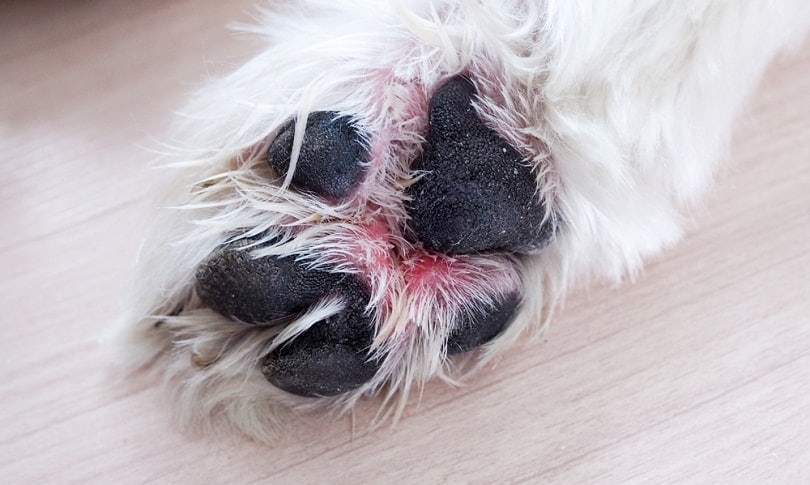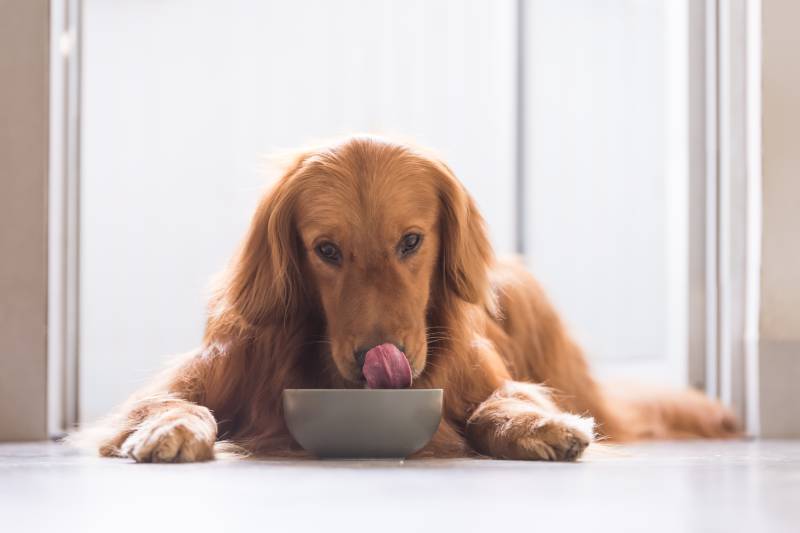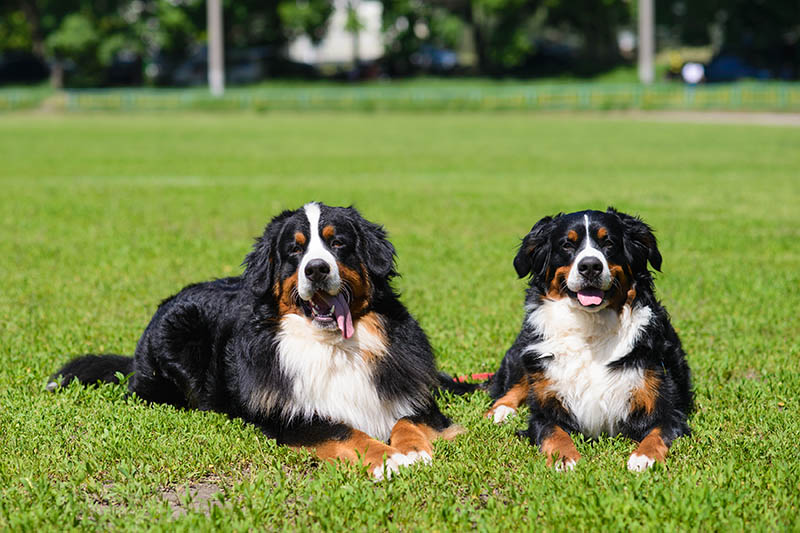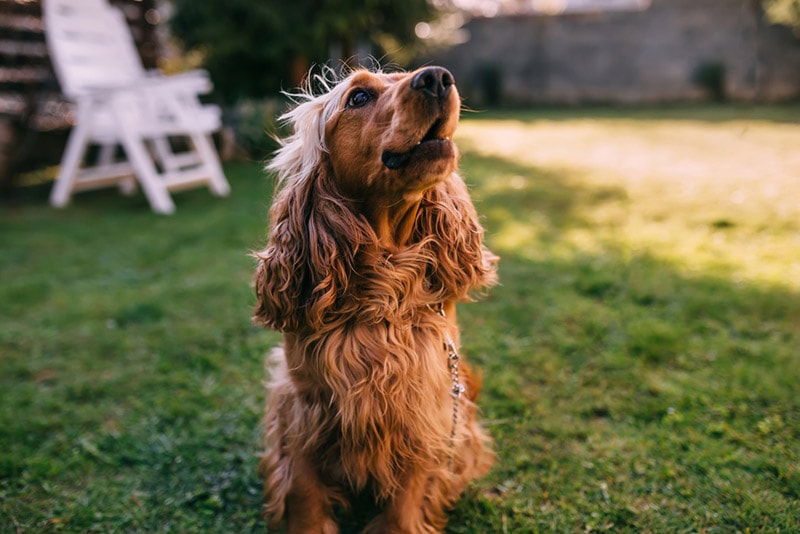Can Dogs Eat Lupini Beans? Vet-Approved Facts & FAQ
Updated on

Click to Skip Ahead
Feeding our beloved dogs a few extra treats is something most pet parents enjoy, and your dog usually appreciates this gesture too! If you are a fan of eating a variety of beans at home within your own diet, you may be wondering if it is safe to offer these to your dog as well. Generally speaking, beans are healthy and nutritious but given that there are a number of edible beans available, as well as different ways they are served, it is advised you research the individual bean you wish to feed your dog.
When it comes to lupini beans specifically, one or two for your dog will be fine, but they can be dangerous if consumed in excess, so we don’t really recommend them since there are better treats for dogs out there.
What Are Lupini Beans?
These yellow, oval-shaped beans are similar to lima beans and are considered somewhat of a superfood due to their powerful nutritious content. Also known as lupin beans and lupine beans, they are seeds of the Lupinus plant and are growing in popularity. They tend to be sold either dried or canned in most supermarkets and stores.
Risks of Feeding Lupini Beans to Your Dog
The lupini bean possesses a couple of risks to be aware of and keep in mind before offering them to your dog.
Allergies or Intolerances
If your dog shows any gastrointestinal issues or skin problems following eating these, stop feeding the beans and contact your vet, as they may be sensitive to this food.

Poisoning
In large quantities, raw lupini beans can be toxic due to a component called hemagglutinin. This tends to be a rare occurrence, however, as most lupini beans sold in supermarkets have been soaked and made safe for human consumption. If any of the below signs are noticed following ingestion of these beans, or a large amount of them are ingested, contact your veterinarian immediately.
- Vomiting
- Nausea
- Diarrhea
- Tremors
- Seizures
- Jaundice
- Incoordination/ataxia
- Weakness
Gastrointestinal Problems
As with any new food or snack, lupini beans with their high levels of fiber may not agree with all dogs. If your dog is subject to any bloating, gas, abdominal discomfort, diarrhea, nausea, or vomiting after eating these beans, stop feeding them and check in with your vet for tailored advice going forward.
Choking Hazard
This risk is higher in smaller breeds and can occur with dried, canned, or cooked lupini beans. Cut them into bite-size pieces to help avoid this issue.

High Sodium Levels
Lupini beans sold for human consumption are often soaked to make them safe and more palatable, or marinated in other flavors or seasonings – raw lupini beans are quite bitter. The result is a product that may be quite high in salt – around 8% in some products. Although this isn’t a dangerous level for your dog, it isn’t something they should be eating too much of.
Benefits of your Dog Eating Lupini Beans
With the risks in mind, there are still a few potential benefits of lupini beans for dogs when fed in very small amounts.
High Protein Content
This plant-based protein is one way of adding delicious and beneficial protein to your dog’s food. The protein and essential amino acids it contains are needed for the growth and maintenance of hair, nails, skin, muscle, tendons, ligaments, and all tissues, as well as assisting with hormone production.
High Fiber
A good fiber content like that found in these beans helps not only weight control and satiety but also the digestive system by keeping everything moving and functioning correctly. Good fiber levels also help to prevent heart-related conditions.

Vitamins and Minerals
Lupini beans contain a powerful mixture of vitamins and minerals, such as the vitamin B complex, vitamin C, iron, magnesium, potassium, zinc, and calcium. All these are responsible for maintaining a healthy body, including bones, energy levels, and the immune system.
Low Fat
Lupini beans contain only approximately 1% fat, and around 40 calories in half a cup.
How to Feed Your Dog Lupini Beans
If you have the all-clear from your vet to feed this bean to your dog, then introduce it slowly and in small quantities. The dried versions of this bean are considered better than canned, as the canned products tend to be too high in sodium (salt), albeit they may be more convenient. The dried lupini beans will need to be soaked overnight and fully cooked with no spices or seasoning added prior to feeding them to your dog. Ensure the beans are properly cooked, as these beans eaten raw or undercooked can bring on canine tummy upsets easily.
After feeding, monitor your dog for any digestive disruption, such as bloating, discomfort, diarrhea, nausea, or vomiting. If all is well, you can continue offering this bean in limited amounts.
If any gastrointestinal upset is noted, then refrain from offering this bean further and perhaps try to offer another suitable alternative instead.

Frequently Asked Questions
What Other Types of Beans Can Dogs Have?
- Black beans
- Lima beans
- Kidney beans (not raw, as they are toxic to dogs in this state)
- Pinto beans
- Garbanzo beans
- Navy beans
- Green beans
- Edamame
- Soybeans
Do I Need to Remove the Skin of Lupini Beans?
Yes, it is preferable to remove the outer skin to aid in better and easier digestion of the beans.
Conclusion
Treats should make up no more than 10% of your dog’s normal daily calorie intake, and lupini beans can certainly be used occasionally. Lupini beans are, of course, not without risk, and as with any human food given to dogs, it is prudent to run any new food item past your veterinarian first before going ahead and offering it to your dog. With that said, because these beans can be dangerous in large quantities, we think it’s best to go with another treat alternative, but if your dog was to steal a few lupini beans, they should be fine. If, however, they manage to eat a large amount of these beans, we recommend contacting your veterinarian immediately for advice.
Featured Image Credit: Jiri Hera, Shutterstock
















